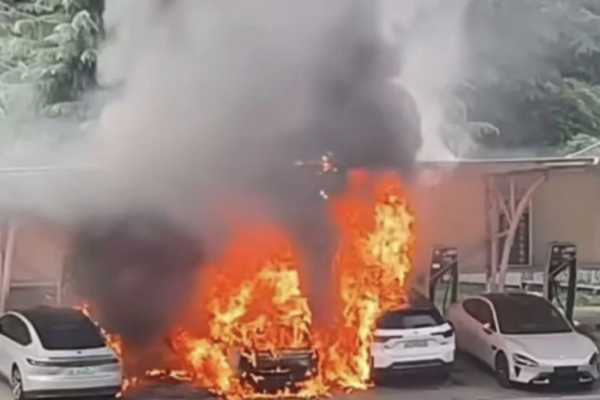Recently, a major fire broke out at a public charging station in Suzhou Industrial Park, involving multiple electric vehicles and causing widespread concern. Eyewitnesses and online videos showed that several new energy vehicles were engulfed in flames, with thick smoke billowing from the scene, creating a harrowing sight. The vehicles involved in the incident included various brands, including NIO.
According to online reports, an electric vehicle caught fire while charging at the State Grid charging station in Suzhou Industrial Park, with the fire spreading rapidly.
Video footage displayed two NIO vehicles parked on either side of the burning vehicle, with one of them also catching fire, alongside an unlicensed Xiaomi SU7 parked nearby, which was in imminent danger. This incident attracted significant attention after being exposed.
On May 25th, NIO responded by stating that the two parked NIO vehicles were ignited by another brand of vehicle that experienced thermal damage. There were no reports of injuries at the scene.
Such incidents of electric vehicle fires are not isolated cases. In April 2022, a similar fire occurred at the Aodianyangzhuang Charging Station in Shijingshan District, Beijing. At that time, Aodian New Energy explained that the accident was caused by a battery in the charging compartment experiencing thermal runaway due to a self-short circuit while idle, leading to battery combustion.
The frequent occurrence of electric vehicle fires in China highlights a concerning trend. Despite continuous emphasis from various automotive companies on technological improvements and safety upgrades, the recurring nature of such incidents indicates that further enhancements are needed in the safety performance of new energy vehicles.
This suggests that there is still room for improvement in the safety performance of new energy vehicles, despite ongoing efforts by car manufacturers to emphasize technological advancements and safety upgrades.

